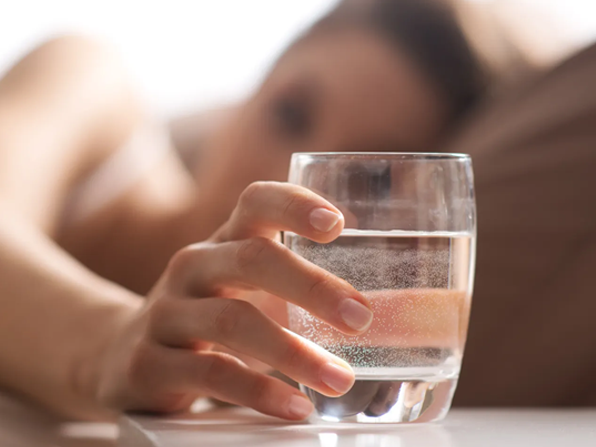
Maintaining good blood flow is vital for a healthy body and mind.
Nowadays, many factors negatively affect our circulatory system. Thus, knowing some effective ways to improve blood circulation is important.
But first, let's briefly cover the most common reasons and signs of circulation issues.
What Causes Blood Circulation Problems?
Poor blood flow can sneak up on you in different ways. Sitting for too long or not getting enough exercise are the most common reasons. Health issues like obesity, anemia, or high blood pressure also affect circulation. Even smoking and heart disease can play a part.
How Do You Know If You Have Poor Blood Circulation?
When your circulation isn't up to par, you might experience fatigue, cold extremities, visible veins, muscle pain, pale skin, or a weakened immune system. These symptoms are more than just minor annoyances. They can affect your overall well-being.
So, if your body shows signs of circulatory issues, you should take action.
How to Improve Your Blood Circulation
We've prepared six simple yet effective ways to boost your blood flow. These methods are easy to incorporate into your daily routine and can make a world of difference in how you feel. Let's dive in and get that blood pumping!
Compression
Have you ever noticed your legs feeling heavy or swollen after sitting for a long time, like during a long flight or a day at the office?
Gravity does a great job of getting blood down to your legs and feet, but getting it back up can be challenging. Our bodies must work extra hard to push blood from the lower extremities back to the heart, especially if we're not moving around much.
When circulation in the lower body isn't at its best, you might experience symptoms like swelling or pain. It's like your legs say, “Hey, we need a little help here!”.
Here are three popular compression methods that help blood circulation in the legs.
1. Move More: Regular movement helps your muscles contract, squeezing the veins and pushing blood back to the heart. Even flexing and extending your calves while sitting can help.
2. Compression Socks: These are an affordable way to improve blood flow by applying pressure to your legs. They can help prevent swelling, blood clots, and varicose veins. Compression levels vary from low (less than 20 mmHg) to high (over 30 mmHg). If you need more compression, consult a doctor for medical-grade socks.
3. Intermittent Pneumatic Compression (IPC) Devices: These inflatable sleeves for your legs are used after surgery or illness to prevent blood clots. Commercial versions are available for athletes and those needing better circulation.
If you want to boost your overall well-being and support your body's essential functions, consider incorporating a high-quality multivitamin like PRIZM into your daily routine.
Unlike most multivitamins that use ineffective nutrients, PRIZM is formulated with the right vitamins and minerals sourced from natural and safe ingredients. It includes 29 vitamins and minerals plus 42 fruits and vegetables, ensuring you get comprehensive nutrition support.
So, if you're dealing with fatigue, poor circulation, or just want to feel your best, Try PRIZM Today…It will help fill the nutritional gaps in your diet.
Stretching
Have you ever felt stiff after sitting for too long or noticed that your flexibility isn't quite what it used to be? It's a common feeling, and that's where stretching can help.
Stretching isn't just for athletes or yoga enthusiasts; it's something we can all benefit from. It increases your range of motion and improves your performance in daily activities…It also has a fantastic effect on your blood flow.
When you stretch, your body releases nitric oxide, which helps dilate your blood vessels. This means more room for blood to flow, improving circulation throughout your body.
A study published by the Human Kinetics Journals showed that people who stretched regularly enjoyed better blood flow, felt less stiffness, and had lower blood pressure.
So, whether you reach for your toes in the morning or do some gentle stretches during a work break, you do more than just loosen up your muscles. You're also helping your heart and blood vessels function better, making you feel more energized.
To enhance your stretching routine and overall physical performance, consider adding VASST to your supplement regimen. It's a premium supplement formulated to improve blood flow and increase nitric oxide levels, which can significantly boost your workout results.
With ingredients like Arginine Alpha Ketoglutarate (A-AKG) and Ornithine Alpha-Ketoglutarate (OKG), VASST supports muscle growth and speeds up recovery times. Whether stretching to improve flexibility or preparing for an intense workout, it can help you maximize your efforts and reach your fitness goals faster.
Try VASST today and feel the difference in your performance and recovery.
Heat Therapy
If you often feel like your muscles are tight or sore after a long day, heat therapy could be just what you need. Applying heat to specific areas of your body can do wonders.
It works by dilating your blood vessels, which increases blood flow. This not only helps with circulation but can also provide relief from pain and stiffness.
Heat therapy has multiple benefits beyond just warming you up.
It can increase muscle flexibility, making moving easier and reducing the risk of injuries. Plus, it releases endorphins, those feel-good hormones that can boost your mood and help you relax. It even gives your immune system a little kick, helping you feel healthier overall.
There are two main types of heat therapy:
Dry Heat: This includes heating pads, warm compresses, and saunas. It's a great option for a quick and easy heat source. Just plug in a heating pad, and you're good to go.
Moist Heat: Involves steamed towels, warm baths, and steam rooms. The moisture can help the heat penetrate deeper into your muscles, providing more effective relief.
Both dry and moist heat can improve blood flow, enhance vascular function, and reduce arterial stiffness. But, like with most good things, moderation is key. Be careful not to overdo it with heat, as prolonged exposure can lead to dehydration or other heat-related issues.
It's all about finding that sweet spot where you feel comfortable and get the most benefit.
Cold Therapy
You've probably heard about the benefits of ice packs or cold showers. It's not just about cooling you down. It's a powerful way to boost circulation and relieve aches and pains.
Applying cold to your body causes your blood vessels to constrict rapidly…A process known as vasoconstriction. This reaction raises your blood pressure slightly and increases blood volume, helping maintain your body's deep tissue temperatures.
Cold therapy is a great way to reduce inflammation and swelling, especially after a tough workout or an injury. It can also lower your metabolic rate, helping to conserve energy.
There are several common methods of cold therapy:
1. Cooling Sprays: Perfect for a quick, targeted application, especially for minor injuries or sore spots.
2. Ice Packs: A classic go-to for reducing swelling and soothing pain. Just wrap it in a cloth to avoid direct skin contact, and you're good to go.
3. Ice Baths: Great for a full-body cooldown, especially for athletes looking to recover quickly after intense training.
4. Cryogenic Chambers: These high-tech options provide an intense cold experience in a controlled environment, offering potential benefits for recovery and overall wellness.
So, when you're dealing with an injury, looking to speed up recovery, or need a quick refresh…Cold therapy is a versatile and effective option. Just remember, like with heat therapy, moderation is key.
Acupuncture
Have you ever been curious about acupuncture but felt unsure about those tiny needles?
It's an ancient practice from Traditional Chinese Medicine that has been around for thousands of years. The idea is simple yet fascinating…By inserting thin needles into specific points on your skin, acupuncture aims to improve circulation and balance the body's energy flow, known as “qi.”
While more research is needed to understand how acupuncture affects the body fully, studies suggest it enhances blood circulation.
It might sound surprising, but these tiny needles can have a big impact. They stimulate your body's natural healing processes and help alleviate various symptoms, from pain to stress.
It's a unique blend of ancient wisdom and modern curiosity. So, why not give it a shot?
Massage
Those who've experienced a good massage know how it helps to relieve stress or ease aching muscles.
But that's not all. Massage therapy raises your skin temperature, which eases muscle tension and improves circulation throughout your body.
Here are three types of massages to suit various needs:
1. Swedish Massage: This classic, gentle massage uses long, circular movements to help you relax. It's perfect if you're looking for a soothing experience.
2. Deep-tissue Massage: As the name suggests, this one goes deeper into your muscle layers, targeting knots and tension. It's more forceful but incredibly effective for chronic pain or stiffness.
3. Sports Massage: Specifically designed for athletes, this massage focuses on injury prevention and rehabilitation. It's great for anyone involved in sports or physical activities.
And if you can't make it to a massage therapist, don't worry. There are affordable devices that can mimic the effects of a traditional massage. These gadgets are convenient for improving circulation and relieving muscle tension at home.
Final Thoughts
Try to incorporate any of these simple methods for improving blood flow into your daily routine. Not just to address immediate symptoms like tiredness or cold hands and feet…But as a long-term commitment to your overall health and well-being.
Better circulation means more oxygen and nutrients delivered to your muscles, organs, and brain. This can increase energy levels, sharper mental focus, and a stronger immune system. It's all interconnected, and good circulation is at the heart of it.
And if you want to turn back the clock on aging…
The BELDT Labs Bedrock Series Collagen Peptides is a fantastic addition to your wellness routine.
As we age, collagen levels decrease, but hydrolyzed collagen peptides can help replenish it.
As a structural protein, it plays a key role in blood flow as it strengthens your blood vessels.
It is essential for maintaining the strength and elasticity of your skin, hair, and joints.
And if you work out…It will help you recover much faster.
Unlike many collagen supplements that come in powder form, these are easy-to-swallow capsules, making it convenient to support your body's needs without the hassle.





